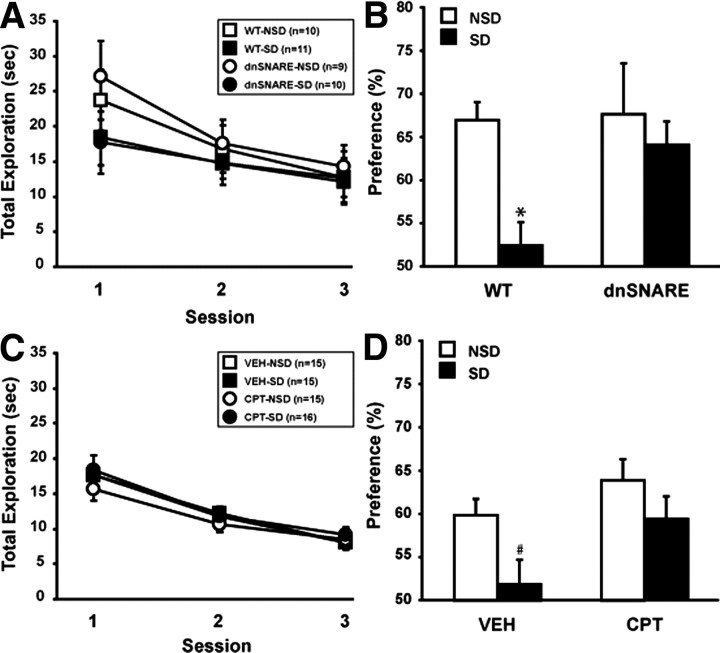Figure 5.
Purinergic gliotransmission contributes to spatial object memory impairment following SD. In the spatial object recognition paradigm, mice were trained through three consecutive training sessions to recognize two different objects. A, No difference of total exploration time for the objects between dnSNARE mice and wild-type littermates was observed. Immediately after training, mice were either left undisturbed (NSD) or were sleep deprived for 6 h (SD). Twenty-four hours later, mice were tested for the ability to detect the spatial change of one of the objects. B, SD impairs spatial memory for objects in wild-type but not in dnSNARE mice during the 24 h test. C, Similar to WT and dnSNARE mice, hippocampal treatment with adenosine A1R antagonist CPT in wild-type mice did not alter the exploration of the objects during the three training sessions. D, SD impairs spatial memory for objects in vehicle-treated mice but not in mice receiving chronic intrahippocampal delivery of CPT for a week before experimentation. #p < 0.05, *p < 0.001. Values are means ± SEM and n represents the number of animals.

